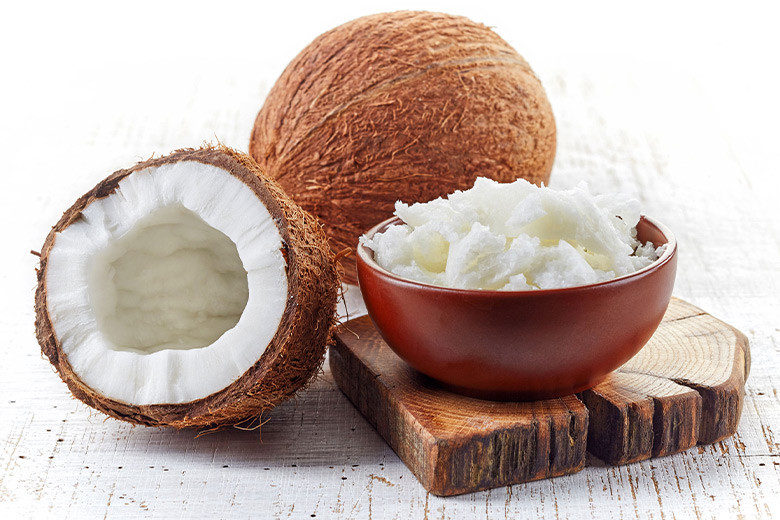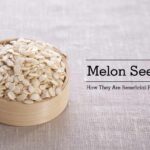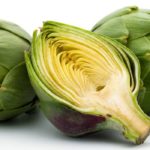Amazing Health Benefits of Eating Coconut
The amazing health benefits of eating coconut are seen in its capacity to providing dietary and therapeutic properties through the minerals it contains which contribute to healthy joints, bones and muscles. This is the reason why coconut is seen as one of the foods for the musculoskeletal system.
It’s vital strength and the coconut resistance, and coupled with the palm’s flexibility proclaim its medicinal properties. Coconut provides liquid which serves for drinking and solid food.
Its fiber can be used in manufacturing ropes and toothbrushes while the trunks of the palm and fronds are useful for producing sandals, textiles and also houses.
Before delving into the health benefits of eating coconut, let’s take a look at the nature and description of this mineral-rich food.
It is worthy to note that in spite of the name “coconut”, it is botanically not a nut.
Other names: Cokernut
French: Noix de Coco
Germain: Kokosnub.

Coconut palm seed (‘Cocos nucifera’ L.) is a tree that belongs to the botanical family Palmae and grows up to 20 meters in height.
The drupe weights up to 2.5 kilos. Coconut is native to the tropical and subtropical islands of the Pacific Ocean and their cultivation has spread throughout the entire tropical Africa, Central America and the Caribbean.
SEE ALSO: Worst Foods for Rheumatoid Arthritis
Coconut Composition
This based on per 100 grams of raw edible portion of this food
Energy = 354 kcal = 1, 480 kj
Carbohydrates = 6.23 g
Protein = 3.33 g
Fiber = 9.00 g
Vitamin A = ___
Vitamin B1 = 0.066 mg
Vitamin B2 = 0.020 mg
Niacin = 1.19 mg NE
Vitamin B6 = 0.054 mg
Folate = 26.4 µg
Vitamin B12 = ___
Vitamin C = 3.30 mg
Vitamin E = 0.730 mg α-TE
Calcium = 14.0 mg
Magnesium = 32.0 mg
Phosphorus = 113 mg
Potassium = 356 mg
Iron = 2.43 mg
Zinc = 1.10 mg
Total Fat = 33.5 g
Saturated = 29.7 g
Cholesterol = ___
Sodium = 20.0 mg
Percentage Composition
Fiber = 9.00%
Carbohydrates = 6.23%
Minerals = 0.970%
Fat = 33.5%
Protein = 3.33%
Water = 47.0%
This based on % daily value provided by 100 grams of this food (Source: Encyclopedia of Foods and their Healing Power Vol. 2; Dr. George Pamplona)
Coconut Percentage distribution of fatty acids
Mono unsaturated = 1.43 g
Polyunsaturated = 0.366 g
Saturated = 29.7 g
In composition of coconut oil (fat), its fatty acids are mostly saturated which has led to the belief that coconut oil promoted cholesterol formation, as in the case of those fatty acids found in animal-based fats.
However, today coconut’s fatty acids are quite unique because the short and medium chain fatty acids in coconut do not lead to increase in cholesterol levels, even as they are mostly saturated.
This property of the coconut’s fatty acids can be seen as one of the health benefits of eating coconut.
Properties of Coconut

It is said that coconut pulp composition is dependent upon its degree of ripeness because when the fruit seems green, it pulp is gelatinous and has a great amount of water with less nutritional content.
When the coconut is matured, the pulp is firmer and also has less water content but its nutritional value is quite high. This is because the nutrients are much more concentrated.
When this happens, it carbohydrates content is valued to be 6.23%, the proteins (3.33%) and also a significant amounts of minerals such as calcium, magnesium and phosphorus.
It is noteworthy that the most abundant nutrient in this fruit is the coconut fat which makes up about third of its weight especially when matured. As it is, about 94.3% of the fatty acids which make up the fat are saturated.
The good thing is that the fatty acids found in coconut are quite unique as they do not promote the production of cholesterol in the body. One of the health benefits of eating coconut is that their fat (coconut’s fatty acids) are easily absorbed and assimilated.
As stated earlier, health benefits of eating coconut is dependent upon its mineral content, particularly magnesium which when ripe contains 32 mg per 100 grams and the water contains 25 mg per 100 grams.
The quantities may seem small but they surpass that of all animal-based foods, for example, eggs, fish, milk and meat.
SEE ALSO: Health Benefits of Eating Kiwi
Among the health benefits of eating coconut is its contribution to bone hardness and even healthy cartilage in the joint. This is because most of the magnesium in the body is found in the bones (60%) and muscles (26%). The lack of this nutrient (magnesium) in the muscles brings about cramps and nervous excitability.
In addition to its magnesium content, coconut contains other minerals that are important to the musculoskeletal system.
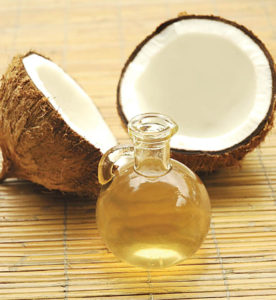
The minerals include calcium and phosphorus.
Therefore, health benefits of eating coconut are quite enormous as food like coconut which provides the above mentioned minerals in right proportion contributes to healthy joints, bones and muscles which is why it is seen as one of the foods for the musculoskeletal system.
Indications to Health Benefits of Eating Coconut
Both the coconut water and its pulp have a beneficial value on the musculoskeletal system which are indicated below
- Osteoarthritis
- Bone decalcification
- Musculoskeletal pain
- Osteoporosis
- Infant teething
Osteoarthritis which may arise within the joint will eventually improve upon regular consumption of this fruit.
Bone decalcification which is simply “loss of calcium”, coconut has a good amount of calcium that can remedy this ailment.
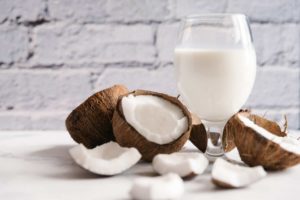
Musculoskeletal pain which may result due to excess tension or the lack of muscular relaxation is indicated here.
Therefore, in cases of musculoskeletal pain, it is recommended to eat coconut since it is a food for musculoskeletal system. They also offer enormous remineralizing effects.
Osteoporosis: There is a well detailed post regarding osteoporosis, you may get the details here. Due to loss of bone mass, coconut consumption is highly recommended.
During infant teething, coconut promotes healthy enamel formation. It is also indicated in cases of brittle hair or nails.
Another outstanding one among the health benefits of eating coconut is that coconut water or milk are quite rich in minerals just like the pulp and the good thing is that they do not contain fat.
YOU MAY LIKE: Benefits of Blackcurrant
Preparation and Use
- Ripe pulp may be consumed raw, grated or whole; or even roasted
- Coconut Milk: It’s quite nutritious and very refreshing. See method of preparation below
- Copra: This is the pulp that must have been by the sun
- Coconut water: This is water or liquid which can be found inside the coconut. When the coconut is greener it contains much water
- Gelatinous pulp: This can be gotten from the unripe coconut and can be consumed with a spoon immediately the nut is made open. Its nutrients are the same as the ripe one but quite low in concentration.
- Coconut oil: By processing copra under pressure, we get coconut oil.
Coconut Milk
Coconut milk is prepared by squeezing grated ripe coconut pulp as stated below.
- Blend the coconut pulp or grate it finely
- Introduce 1/2 liter of boiling water and allow it stay for an hour. Cow’s milk may be used
- Use cotton cloth and put all the coconut paste in it.
- Twist or wring the cotton cloth that contains the coconut paste until the liquid has been removed.
The third step and the fourth may be repeated. The coconut milk may be added to fruit shakes or for dishes it can also be used as a soft drink.
According to healthline, coconut provides us with active disease-fighting antioxidants
Foods That Help Prevent Diabetes

A graduate of Computer Science and Information Management Technology. Diploma – Caregiving, Certificates – Dementia and Diabetes Awareness and Management. A researcher, blogger, songwriter, singer and acoustic guitarist. Born in an environment where natural talents such as healing are imparted at our natural birth. This natural talents of healing is the result of our genetic inheritance and the training from family environment.

